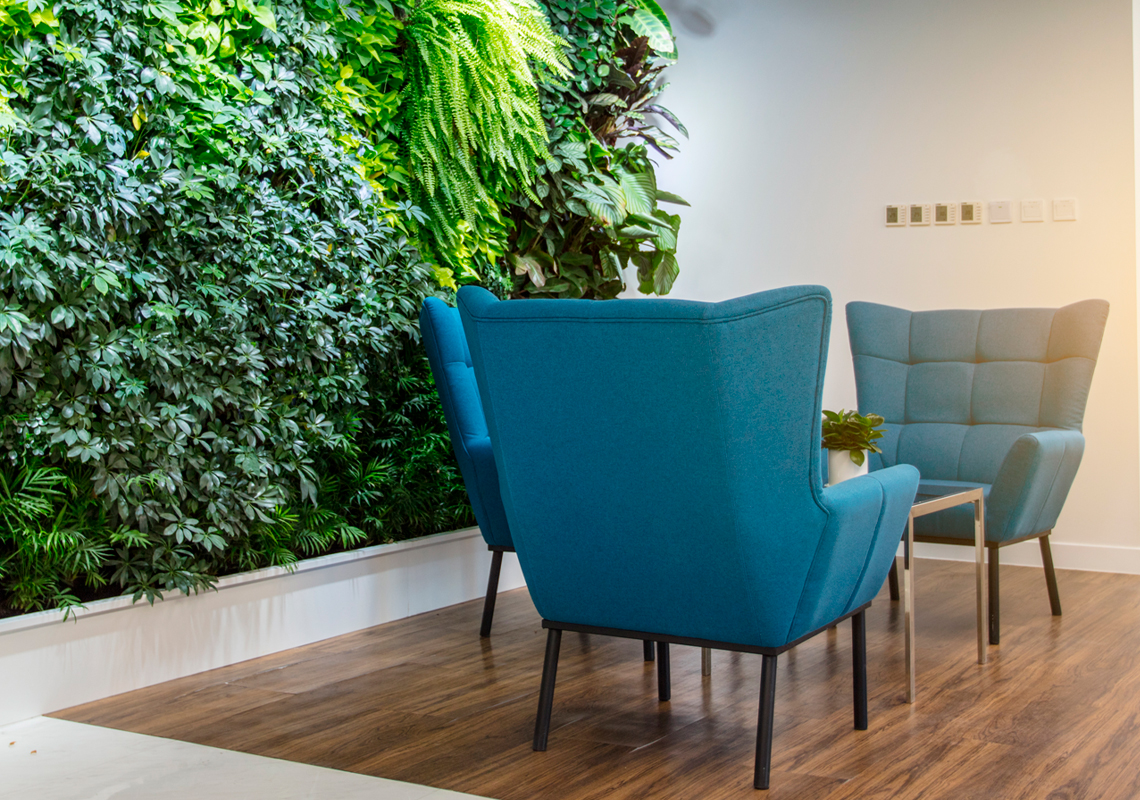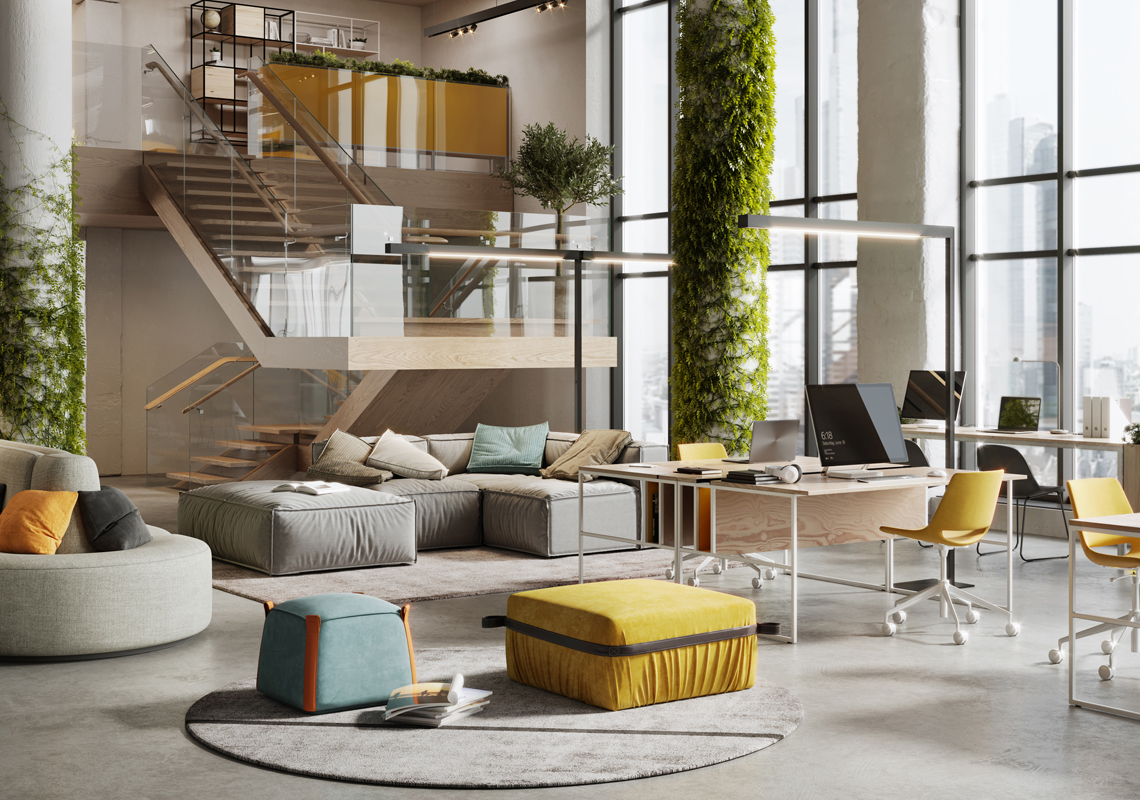No longer at the office full-time. What's next?
‘A shift in office design means a shift in mindset’, explains Rogier Stoop, commercial director of Jan Krediet. In this blog, he shares his vision on office refurbishment during and after COVID-19. ‘The familiar office life is largely over; office spaces will certainly continue to exist, but with a new function. Stimulating creativity and collaboration are central to this.’


WITH 15 CHAIRS PER PERSON BUT NO STORAGE CUPBOARDS, WE’RE MOVING TOWARDS INNOVATIVE WORKPLACES
MILLENNIAL-PROOF OFFICE (RE)DESIGN
A lot has changed due to COVID-19—not just in terms of how we spend our free time, but what our lives at the office look like. One and a half metres is the new standard, and one which brings new challenges to the field of office design. (Hybrid) working from home is the new, and perhaps permanent, standard for many organisations. As a result, an increasing number of companies are thinking more critically about the design of their office buildings. While metres cost money, unused metres are much more expensive. Increasingly, furniture giants are considering the role of commercial furniture during these developments.
Stoop: ‘You can see that many large furniture manufacturers are working on innovative ideas and the marketing of new products. It is striking that the giants are not all parroting each other but have quite different views on the matter. Hybrid working, for example, seems to be the new way of working, but manufacturers are certainly not unanimous in seeing it this way. No one knows exactly what the future holds’.
‘All large (office) buildings have value as long as they are being rented out. There are currently many old office buildings being emptied, after the pandemic has shown us that employees no longer have to sit together in one room five days a week to carry out their work. Other buildings are being redesigned with innovative solutions in future-proof ways in an attempt to play into the needs of Millennials. For them, their physical presence in the workplace is increasingly becoming a conscious choice determined by the nature of their work and its required level of interaction with colleagues and other (physical) resources. In hybrid working, users have the opportunity to perform solo and administrative activities at home and to seek out interaction with colleagues at the office. Having more room for fun, relaxation and challenges stimulates creativity. Think of flexible workplaces with high-quality industrial furniture that ensures users feel at home and can work together more intensively. So-called “dancing walls” (walls on wheels) that separate areas, acoustic plates to dim sound and relaxed coffee corners all have an important function here. The increase in flexible electronic devices will also have an impact. For example, a current question is: “How can we invent flexible furniture that is electric but does not depend on sockets?” Also: “How do we get the home workplaces up to scratch from a health-and-safety point of view?” One should not work full-time at the kitchen table.’
TO EACH THEIR OWN
OTHER COUNTRIES, OTHER IDEAS
‘The fun thing about all this is that there are widely different ideas about this theme in England than in, for example, Spain. London-based companies often have smaller office spaces with less business furniture. Why? The cost per square metre of office space is much higher than in Europe! In Singapore, the situation is even more extreme. Sit-stand desks were not only invented for health reasons, but also due to a lack of available space.’
‘Another striking aspect of furniture logistics is that almost no cabinets are being sold worldwide anymore. What do we still need to store in today’s world? Everything is digital. The few cabinets that are being sold often serve as decorative items. But, to me, the most interesting development is the increase in chairs. Five years ago, one person had about eleven chairs at his or her disposal. (Think of chairs at home, at the dentist, at work, at the homes of our family, etc.) Today, in 2021, we are already at 15 chairs per person! In part, this is because we use more spaces, which means we require more chairs.’
SMALL AND MEDIUM-SIZED ENTERPRISES CANNOT BE LEFT BEHIND
BUSY FUTURE FOR THE WORLD OF LOGISTICS
‘In my opinion, even SMEs that require less working space cannot be left behind in the end. An advantage for SMEs is that they often operate in informal spaces around the corner from their employees, so one often feels at home quickly. The physical distance to work is often smaller. One doesn’t need to step into a crowded train to the city centre of Amsterdam to work in a large office building. This reduces the chance of infection. In my opinion, SMEs can continue as they were doing with small adjustments to their interior design. In the end, however, they cannot be left behind in terms of office redesign and/or hybrid working. Ultimately, they will also need new people, including Millennials. Millennials with new and different ideas about (hybrid) working and the application of digitisation. The pandemic has accelerated digitisation, making it harder for many companies to get people interested in their organisation. I believe gamification can play a role in reaching, informing and appealing to this group digitally, much like, for example, offering augmented reality. Augmented reality is not only interesting for Millennials; it can also be used by companies that want to know what their new office design will look like before actually purchasing it.’
‘We think that, as a logistics partner, have a busy time ahead of us; many buildings, offices, but also home offices need to be changed and reorganised. Sustainability will also play a major role in the redesign. And, in terms of durability, we should not underestimate the cost of materials. I think we can (and should) do a lot with the plastic surplus the redesign generates. (You can recycle it and use it for acoustic purposes, for example, but you can also use it to make furniture across different price ranges.) In addition, although hybrid working seems to be the new standard, some manufacturers indicate that, in combination with ecodesign, there will be many more workplaces per square metre. While unthinkable at the start of the COVID-19 crisis, it is nice to see how factories have had to flexibly shift gears to be able to recirculate products. I’m curious to see what will become the ‘new mainstream’. People can sometimes be heard saying that this time is full of threats, but I think that’s nonsense. This is an interesting time full of possibilities for innovation! It’s time to shift our traditional way of thinking to a new mindset!’